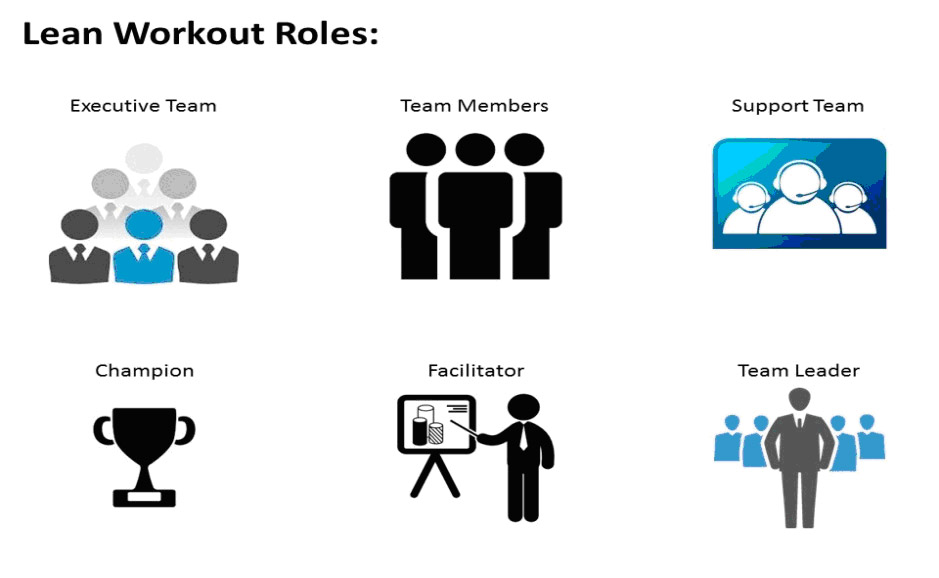 |
|
Doman: Lean Workout teams create momentum. |
The corporate PowerPoint presentation reveals that profits are dropping, costs are up, quality is down, revenues are sliding, new competitors are rearing their ugly heads and taking away market share. The presentation answers why the company needs to change quickly.
The manufacturing company executives sitting across the conference table from me have been charged with “fixing the situation fast.” A recent high-level management retreat has identified the four (or five or six) pillars of progress, and lean is seen as the answer to fix many of them. The question from them to me is: “What do we do now?”
I have already emailed them a copy of my Target article, “How Lean-Ready Are You?” and asked them to read it before our meeting. I hope they did so because the first step is that top leadership needs “to take the ball on this and not hand it off.” They need to be all-in if there is any chance for a lean transformation to be successful.
We talk about the executive team completing a Lean Readiness Assessment (LRA). They say they already did (sort of). Not a great way to start.
I then walk them through how to conduct Lean Workouts on a company-wide basis. This is basically Step 4 of the LRA process. I tell them that this would be a good time to retain a lean consultant who is experienced in facilitating Lean (Kaizen) Workouts and training employees on teambuilding as well as lean tools and techniques.
I explain to the executive team that the best lean companies primarily use Lean Workouts as “learn-do” workshops to train their employees to be able to identify and fix process problems on the job using lean tools and techniques, rather than “one-off” projects to improve results.
In their case, I recommend that they select one champion for each pillar from the executive team and then work with the champion to select a team leader and five to six employees from different levels and functions to serve as team members. The Lean Workout team should then work with the champion to choose a Key Process Problem (KPP) that, when solved, will positively impact their pillar and company results, preferably without a lot of capital.

As I describe the Lean Workout process, I reinforce how important it is to use Kaizen to demonstrate the power of a small team working together to solve a significant problem for the business in a short period of time. These Lean Workout teams will create momentum for the company’s lean transformation and also create a growing cadre of trained and motivated employees.
That is why it is critical to select the right champions, team leaders and team members who will be willing to give this a fair shot and have credibility with the executive team and the frontline workforce.
Here is my three-phase framework of a Lean Workout:
1. Background and problems
o Describe the organization and the dysfunctional process (“process”) your team is working on.
o Detail the KPP(s) caused by the process.
o Process map the process.
o Specify the requirements of key stakeholders and suppliers and
customers.
o Describe your team’s major goal(s)/target(s) and the ideal state of the process.
2. Current condition and root cause analysis
o Process map the current condition of the process and highlight the key problem areas in the process.
o Describe and color-code the value-added steps in the current condition process.
o Describe and color-code the MUDA/non-value-added steps in the current condition process.
o Identify and analyze the root causes of the key problem areas and MUDA/non-value-added steps in the process.
o Identify and describe the lean tools and problem-solving techniques your team is using to “lean out” the process — eliminating the MUDA/waste and resolving the problem(s).
3. Recommendations for new lean target condition and implementation plan
o Process map your team’s recommended new lean target condition process. Evaluate your recommended target condition in terms of its effectiveness, feasibility and impact.
o Describe and color-code the value-added steps and remaining MUDA/non-value-added steps in the new target condition process.
o Describe your team’s specific implementation plan and timeline required to successfully implement the target condition process.
o Identify the recommended new process owner(s), key metrics, standards and follow-up activities/timelines required to successfully implement the target condition.
o Identify and describe all of the lean tools and problem-solving techniques your team used to “lean out” the process — eliminating the MUDA/waste and resolving the problem(s).
I recommend that the teams meet at least once a week for at least two hours for up to two months. The executive team should set interim timelines and hold review meetings with the individual teams after the completion of each of the three phases. This will make sure that “everybody is on the same page” throughout the Lean Workout. The last review should include the new process owners who will be charged with implementing the agreed-upon target condition. Some of the original team members may be assigned to work with the process owners.
Then I say, take the best team members and make them team leaders and start over again with new KPPs and keep fixing problems and expanding the cadre of lean-trained and committed employees in your organization.
Mark S. Doman is a Pawley Professor in Lean Studies at Oakland University in the Human Resource Development Department and a member of the leadership team at the Pawley Lean Institute. Prior to joining Oakland University, he had 25 years of business experience with Ford and AT&T, where he held various executive positions in operations, human resources and legal. He has led several major organizational change initiatives throughout his career that included Lean Workouts, quality circles, TQM, process re-engineering, kaizens and corporate restructuring. He is the author of “A New Lean Paradigm in Higher Education: A Case Study.” Quality Assurance in Education, Vol. 19 No. 3, 2011 and “How Lean Ready Are You?” Target, Vol. 28 No. 2, 2012. His email address is doman@oakland.edu.


